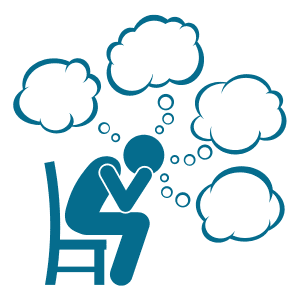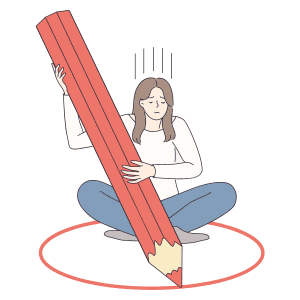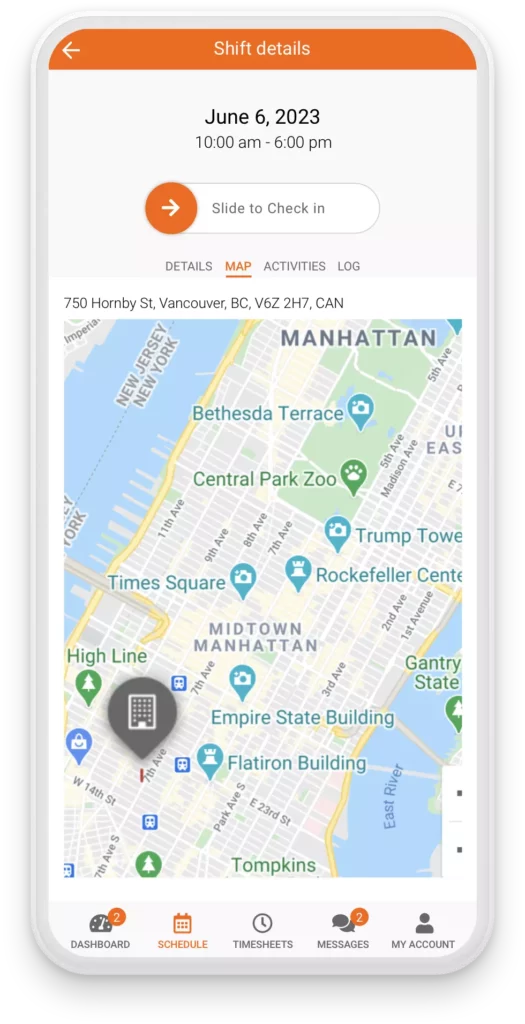“When people like their lives, and that includes work life, they’ll do a better job of taking care of themselves.”
Jeffery Pfeffer
Workplace stress can happen to any employee in any industry, no matter the seniority of a job position. A significant point to remember about workplace stress is that it is more likely to occur in certain situations than in others. Additionally, certain people will experience stress more than others.
A small amount of workplace stress can be positive in some instances. Stress releases hormones that give you a burst of energy. It can be helpful when you need to focus on a task or have a big project to finish.

However, being under constant stress is very unhealthy. It can lead to long-term health problems such as poor mental health, cardiovascular disease, and high blood pressure (Health Link BC).
What causes workplace stress?
Depending on your role or industry, there are an endless list of potential sources of stress at work. In general though the causes of stress on the job can be grouped into a few categories.
TIME-LIMITED STRESS
As mentioned, stressful situations can arise now and again in the workplace, which is just a fact of life. Workplace stress becomes an issue when these situations are constant, and employees don’t have the correct tools to deal with them. A common cause of workplace stress is short-term job demands such as tight deadlines or exams.
These stresses usually won’t have damaging long-term effects, as they are only temporary. Employees will be under some pressure for a small amount of time, and then normal work activities will resume. However, if these happen regularly, the effects of of job stress can become cumulative.
JOB-SPECIFIC STRESSES
According to an article titled “Causes and Management of Stress at Work” by S Michie, common workplace stresses can be related to the job itself. For instance, long hours, overload of work, unsafe working conditions, job insecurity, difficult tasks, and lack of flexibility. These are constant stresses in an employee’s life and will affect an employee’s wellbeing and personal life over time.
Contrastingly, personal stresses from an employee’s home life can carry through to the workplace. For example, if an employee is experiencing financial stresses or family illnesses etc. It is a vicious cycle, and both stresses will cause serious issues down the line if not rectified, including physical and emotional responses.
THE SOCIAL ASPECT OF WORK

These are stresses related to the social context of work e.g. difficult relationships between employee and manager, lack of social interaction, workplace bullying, or harassment. Workplaces that have positive social aspects reduce stress on employees.
Positive work relationships between colleagues and supervisors make for a more pleasant and inclusive environment for everyone involved. When the social aspect of a person’s job is negative or lacking, employees will feel unmotivated and find attending work every day difficult.
Workplace culture
Different workplaces will have different workplace cultures. Employees will behave differently depending on the company they work for. Organizations expect employees to work overtime, skip lunch, or not take time off. Other organizations will encourage their teams to finish work on time and take the necessary time off.
An open and trusting workplace means employees have flexibility and transparency around the work they do. It also gives them a sense of control and autonomy which can help when it comes to reducing stress. Organizations with positive company cultures will ensure people feel secure in their position. As a result, this will lead to lower staff turnover and motivated teams.
How can you help reduce workplace stress?
LOOK FOR THE SIGNS OF WORKPLACE STRESS
Signs your employees are experiencing workplace stress come from changes in their emotional and physical behavior. For example, being withdrawn from the rest of their team, feeling unmotivated, being aggressive, or experiencing sadness.
Employees can also experience changes in physical health related to stress including headaches, nausea, and feeling lightheaded. Keep an eye out for your team. If you recognize any of these signs, it may be time to have a discussion with them about their workload.

Workplace stress management is a gradual process. When dealt with early on, it means less long-lasting impacts on the employee. As well as looking for emotional and behavioral signs in your employee, look for signs that the workplace itself is causing stress.
Adapt the working conditions to employees’ physical and mental aptitudes to ensure it is a safe space for all. In the long run, it is always better to tackle these issues early on so that they can’t develop into a more serious problem. The longer you leave the situation undealt with, the harder it is to resolve.
EQUIP YOUR TEAM WITH APPROPRIATE TOOLS
You can help your team by providing resources and helping them to build their skills to combat workplace stress. Good problem-solving and time management skills are key tools for employees to have in their back pocket. These are skills that they can carry with them for life.
You can help improve the work environment by ensuring it is a safe place to work and employees have appropriate support. Further, improve these resources by putting a good work infrastructure in place. You can do this through effective workforce management and employee scheduling.
How you work with your employees to give them flexibility in the workplace and with their work hours is crucial. Allowing employees to self-schedule and have control over their schedule is a good way of giving your teams flexibility in work. Having strong management and employment practices ensures people feel safe and happy in the workplace. It enables them to deal with those temporary work stresses that pop up.
SAFETY CHECKS

Employees will obviously feel stressed out if the workplace is not a safe environment. You should put safety checks in place which employees must fill out throughout the day. These safety checks can be to ensure they are wearing the correct items or have the necessary safety tools etc.
This protects the employee and the organization in the future if an incident was to occur. You can also include other safety features such as geofencing and instant messaging. These features allow you to communicate with your team throughout the day.
Remember, it is essential to find the root cause of stress for the employee. As an employer, you have a duty to ensure the safety and wellbeing of your employees. It is in a company’s best interest to prevent workplace stress from the outset.
High levels of stress mean high staff turnover, reduced work performance, and increased rates of accidents. Continue to assess the risk of stress amongst your teams. Identify what could potentially cause stress and deal with it early.





